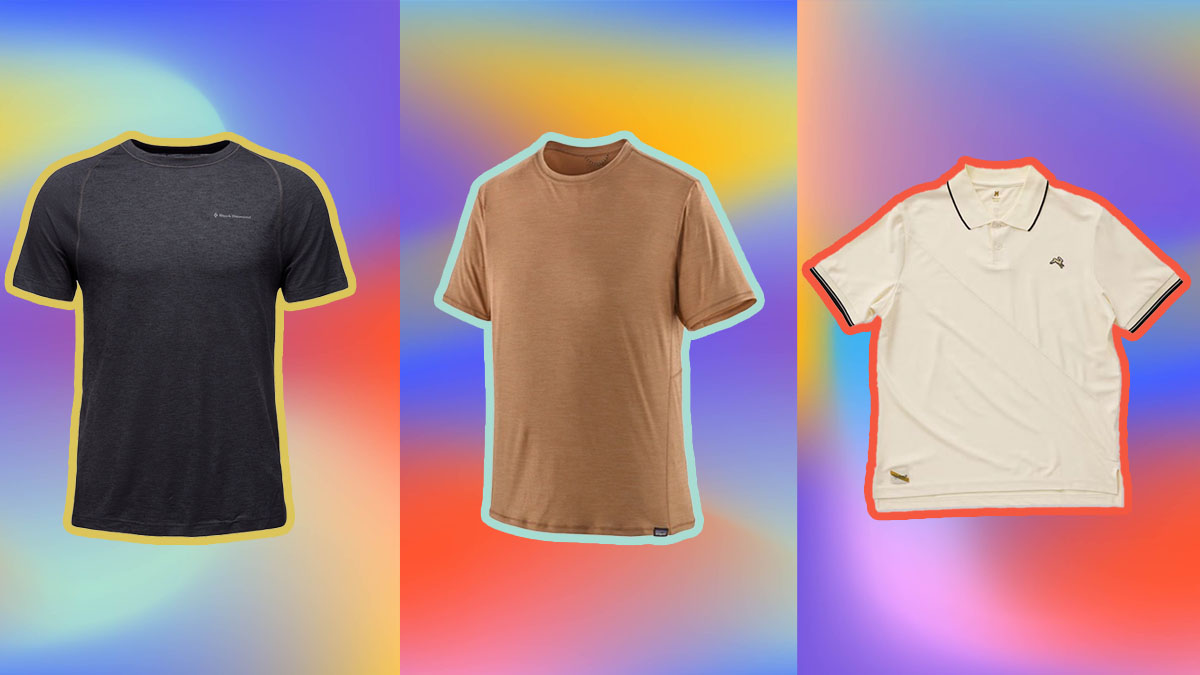Nota bene: All products in this article are independently selected and vetted by InsideHook editors. If you buy something, we may earn an affiliate commission.
Once you step out for a run, your running shirt should be the last thing on your mind. Ideally, your top is so comfortable, so accommodating, so breezy and moisture-wicking, that it essentially disappears on your torso. That way, you can focus on your form and your pace.
There are tons of men’s running shirts out there, so finding the right one can be a bit overwhelming. Even so, this is a shopping decision that’s worth spending some time on, because uncomfortable clothing can leave you chafed, overheated and ultimately less motivated to run.
The Best Running Shorts for Every Type of Runner
Lined or unlined, short or long, these shorts will get you through all your warm-weather runsBest Durable: Rhone Reign Short Sleeve
Best Singlet: Bandit Airware Performance Singlet
Best Merino Shirt: Black Diamond Rhythm Tee
Best Lightweight: Patagonia Capilene Cool Lightweight Shirt
Best Baselayer: Saxx Roast Master Midweight
Best for Tall Guys: REI Co-op Swiftland Running T-Shirt
Fun Colorways: Janji Run All Day Tee
Best Hoodie: Patagonia Tropic Comfort Natural UPF Hoody
Best Stylish: Tracksmith Van Cortlandt Polo
Things to consider
Any shirt — including that old cotton T-shirt in the back of your dresser — can be pressed into service as a running shirt. Before shelling out for new apparel, it’s a good idea to run with the running shirts or workout shirts you have and see how they perform. You might be just fine running in the same shirt you wear to the gym. If you’re not happy with your existing tops, however, consider a few key features when shopping for replacements.
Coverage: Running shirts offer varying degrees of coverage, from a hoodie to a barely-there singlet. Technical hoodies and long-sleeve shirts offer more coverage and sun protection. The long-sleeve tees can also double as base layers in colder weather. T-shirts are a good middle-ground option. There are also singlets, which are a solid choice for racing — they typically weigh less than any other top, and they offer maximum freedom of movement.
Material: The fabric a running shirt is made from will have a major influence on its performance. Most running shirts are made from synthetic fabrics, especially polyester. Polyester offers good breathability, wicks moisture and it’s durable. It’s often blended with elastane (a.k.a Spandex or Lycra), a very stretchy material, which helps the shirt move with you and retain its shape.
Merino is a natural fiber derived from sheep, and it’s another top choice for running shirts and other performance apparel. It naturally vents sweat, regulates your temperature in both hot and cold weather and resists odors. Some newer running shirts blend merino with nylon, a synthetic fabric, for improved durability.
Although some runners love cotton (and it can work just fine in chilly weather), it’s generally smart to avoid cotton shirts. They will absorb sweat, cling to your skin and weigh you down while running. A few athletic shirts utilize modal or lyocell fabrics (the Patagonia Tropic Comfort hoodie below is one example). These are semi-synthetic fabrics derived from wood pulp. They offer a comfortable feel similar to cotton, but with significantly improved breathability, so you don’t drown in sweat while running.
Construction: Running obviously involves your legs, but your arms move with each stride as well. It’s important to have a running shirt that doesn’t restrict your movement or cause chafing. There are a few key features to look for. Raglan sleeves — where the sleeve extends all the way to the shirt collar — offer better freedom of movement for your arms. Other shirts use underarm gussets, or separate fabric panels sewn into the underarm areas. They keep the shirt from digging into your arms and allow them to swing freely.
Seams are another important area to pay attention to. Traditional seams, where two pieces of fabric overlap and are stitched together, are bulky, and they can rub your skin and cause chafing. Flatlock seams reduce the bulk. Two pieces of fabric are lined up side-to-side and stitched together with no overlap, creating a flatter, smoother seam. Bonded seams don’t use stitches at all: The fabric pieces are glued together to create a sleek, unobtrusive seam that prevents skin irritation.
All the shirts below are designed to keep you comfortable through serious workouts. Read on for our picks for the best running shirts.
Most Durable
Best Singlet
Best Merino Running Shirt
Best Lightweight Running Shirt
Best Baselayer
Best for Tall Guys
Fun Colorways
Best Hoodie
Best Stylish
We've put in the work researching, reviewing and rounding up all the shirts, jackets, shoes and accessories you'll need this season, whether it's for yourself or for gifting purposes. Sign up here for weekly style inspo direct to your inbox.






















